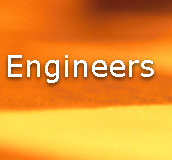|
STRESS RELIEVING
Machining induces stresses in parts. The bigger and more complex the part, the more the stresses. These stresses can cause distortions in the
long term. If the parts are clamped in service, then cracking could occur. Also hole locations can change causing them to go out of tolerance. For these reasons, stress relieving is often necessary.
Typically, the parts that benefit from stress relieving are large and complex weldments, castings with a lot of machining, parts with tight dimensional tolerances and machined parts that have had a lot of stock removal performed.
|





